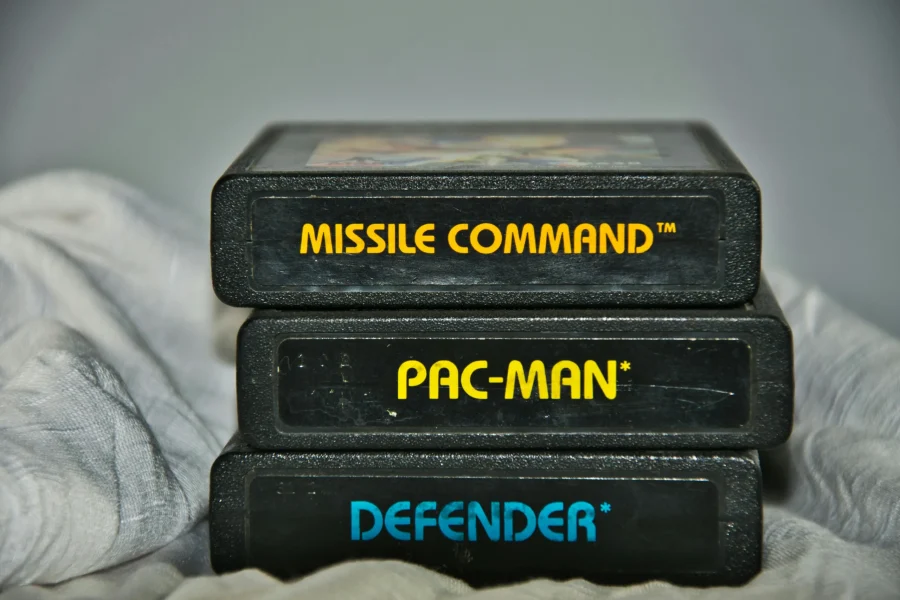How Much Does Junk Removal Cost in California?
In 2022, California generated 76 million tons of waste, with 53% (about 40.5 million tons) ending up in landfills. The state aims for a circular economy to reduce trash production and create responsible recycling markets. Despite efforts, 11.3 million tons of recyclable materials were exported, highlighting challenges in achieving recycling goals and emphasizing the importance of improving recycling infrastructure within the state.
California's junk removal regulations necessitate businesses in this sector to adhere strictly to state laws for responsible waste management. This directly results in a junk removal cost California to properly dispose of unwanted items.
Why Junk Hauling Cost in California May Vary
There are several factors that affect junk removal cost California. There are additional local factors that can affect the average junk removal cost in California. Local landfill fees and recycling center policies can increase costs. Seasonal cleanups also cost more due to the high demand for junk removal services. Specific California statutes on waste disposal and recycling efforts may also increase costs for some items.

Special Factors to Consider in California Junk Removal Pricing
Different types of junk may have unique considerations in California due to environmental concerns and state laws. The following types of junk and related regulations will help you determine junk removal pricing California.
Appliances
California has robust regulations for appliance disposal due to hazardous materials like refrigerants in refrigerators and air conditioners. Proper handling and disposal or recycling of these substances can increase appliance removal cost in California. The Department of Toxic Substances Control (DTSC) outlines the Certified Appliance Recycler (CAR) Program, which mandates recyclers to meet specific standards, including obtaining a Hazardous Waste Identification Number and ensuring proper handling of materials that require special handling (MRSH). California junk removal cost is increased when appliances must be sent to a certified recycler.
Yard Waste
Due to California’s emphasis on reducing landfill use, there are often specific programs for yard waste that turn it into compost or mulch. California junk removal pricing for yard waste can vary based on the availability of these programs and the volume of waste.
California's initiatives include transforming food and yard waste into compost and clean energy, supported by a significant investment. The state has allocated $130 million to help communities recycle 7.7 million tons of organic waste. As part of this effort, 75% of California communities now have residential organic waste collection programs, and nearly all have expanded commercial organics collection programs. Check your local waste management website to learn about residential organic waste collection programs in your area.
Different municipalities may have unique ordinances affecting yard waste disposal, potentially impacting costs depending on the service area. Junk removal costs in California can be increased by costs such as biodegradable bags.
Bulky Items
Bulky items like large pieces of metal or construction debris may require special handling or equipment for removal, affecting pricing. In addition, certain bulky items may be restricted from landfills, necessitating alternative disposal or recycling methods that could be more costly.
Some municipalities have bulk item pickup for some items that could reduce your junk removal California cost. For example, the City of Los Angeles provides free bulky item drop-off for residents at designated locations. Items accepted include furniture, carpet, yard trimmings, shelving, and wood. Residents unable to transport their bulky items can schedule a curbside pick-up through the city's Customer Care Center or the MyLA311 app.
For services beyond what the city offers, junk removal companies price their services based on labor, transportation, and disposal methods. The average cost of junk removal in California for these items depends on the type of item and how it must be disposed of.

Electronics
Electronics contain hazardous materials and are subject to California's Electronic Waste Recycling Act, which requires special handling and disposal processes. This legislation established a comprehensive system for recycling certain types of electronic waste (e-waste) and is implemented by various state departments, including CalRecycle and the Department of Toxic Substances Control (DTSC). These disposal regulations can affect junk removal costs in California.
A key component of this program is the Covered Electronic Waste Recycling Program, which facilitates the recycling of e-waste by providing Californians with convenient recycling options. The state identifies specific devices as CEDs, including but not limited to CRT devices, LCD and OLED televisions, monitors, laptops, tablets, and portable DVD players. This categorization is crucial because it determines which items are eligible for the recycling program and subject to associated fees.
Electronics not identified as CEDs still need to be recycled responsibly. Junk removal companies can remove those electronics and dispose of them accordingly. This can affect junk removal costs in California.
Furniture
Junk removal California cost of furniture can vary greatly based on the type and size of furniture. The option to donate or recycle furniture can affect pricing, as some services may offer discounts or even free removal if the item is in good condition and can be donated. On the other hand, larger pieces of furniture or those made from materials difficult to recycle or dispose of may incur higher costs due to the special handling or equipment needed.
How to Estimate Your Junk Removal Costs in California
There are three steps one can take to estimate junk removal costs in California.
1.Assess the volume of junk.
The total area or space that the junk occupies can significantly impact California junk removal pricing, especially for larger cleanouts. Measure the length, width, and height of your junk pile and convert this to cubic yards (length x width x height divided by 27). If measuring is impractical, visually compare your junk to the size of a standard pickup truck bed, which holds two to three cubic yards. Take clear photographs from different angles to share with the junk removal provider for an accurate estimate.
2. Identify the type of junk.
General junk includes items like furniture, appliances, clothes, and general clutter. Identify any specialized electronics or appliances that may be more costly to remove. Materials like concrete, bricks, soil, and roofing shingles are heavier and may cost more to remove.
3. Consider additional fees.
There are some additional fees for heavy materials or special disposal that can affect junk removal costs in California. For heavy materials, companies might charge a weight surcharge in addition to the volume-based fee. There may also be special disposal fees for items that require special disposal methods, such as electronics or hazardous materials.
If you have a very small amount of junk, your cost could be determined by a minimum fee rather than the actual volume of junk. The ease with which items can be loaded also affects the cost. It will cost more to remove junk from a high-rise apartment than a ground-floor garage.
After gathering all this information, contact several junk removal companies for quotes. Remember that the cheapest option might not be the best. In addition to junk removal costs in California, you should also consider the company's reputation, customer service, and environmental policies when making your final decision.
Where to Save
If California junk removal pricing seems out of reach, there are a few ways to save while getting rid of your junk. Some cities offer pickup or dropoff services for free. You can also save money by selling or donating reusable items. Here are some additional ways you can save.
Utilizing Municipal Services
Many municipalities offer bulk pickup services for large items like furniture and appliances. Check your city or county’s waste management website for schedules and regulations. You can also check with the California Department of Resources Recycling and Recovery. CalRecycle provides resources and information on recycling programs, including those for appliances and e-waste, affecting disposal options and junk removal California costs.
There are a variety of items that municipal garbage pickup may take for free, including:
• Household trash, recyclable materials such as paper, cardboard, glass, and certain plastics
• Yard waste like leaves and grass clippings
• Large household items like furniture and appliances on designated pickup days
Specifics can vary by locality, with some areas offering special collection events for electronics, hazardous waste, and other materials requiring special handling. If you can wait for one of these collection events or take advantage of other municipal services, it could reduce or eliminate appliance removal costs in California
Start Selling
Anything reusable can be listed for sale online on platforms like OfferUp, LetGo, NextDoor, and 5Miles. Research the pricing of each item to ensure you’re within the market range, and be prepared to negotiate with buyers.
This option can take a considerable amount of time. Sorting, listing, taking pictures, cost research, and meeting buyers all take time from your busy life. Assess the time and effort it’ll take to make the sale versus the cost of junk removal in California and having professionals take it away for you instead.
Holding a garage sale is also an effective way to declutter and make money from items that are too bulky or numerous to sell online. A garage sale also takes time to set up and run, and you could still find yourself in need of junk removal services to get rid of items that don’t sell.
Recycling
One way to avoid junk removal at California cost is to take advantage of state recycling programs. Residents can participate in California recycling initiatives to reduce junk removal costs.
For example, The City of Los Angeles, for instance, offers a Refrigerator Recycling Program through the Los Angeles Department of Water and Power (LADWP), which gives customers a rebate for recycling old, energy-inefficient refrigerators. This program illustrates how recycling incentives and programs can lower the cost to consumers by offering rebates, but also highlights the logistical costs involved in picking up and recycling these items.
For hazardous waste, participate in local collection events for items like batteries, paint, and chemicals, or dispose of hazardous waste at approved facilities to ensure safe handling. CalRecycle and your local waste management website can provide more details about hazardous waste collection efforts.
Donating
Another way to avoid junk removal in California is to donate reusable items. Local libraries, schools, and children’s programs often welcome donations of books and toys. There are also charities that take used furniture, appliances, and household items that can be reused. Some charities will even pick up donations for free.
Here are a few charities to consider.
Habitat for Humanity ReStores: Accepts small and large donations of new or gently used furniture, appliances, housewares, and building materials + many locations offer free pickup for large items
Salvation Army: Offers pickup services for large items and has drop-off locations across the city.
World Relief Sacramento: Accepts donations of furniture in new or "like new" condition, such as couches (no sectionals, sofa beds, or recliners), dressers, dining sets, kitchen tables and chairs, and more.
The Arc: Accepts donations of clothing, household items, furniture, and electronics.
The more you can donate, the lower the cost of junk removal services in California. Donations are also tax deductible in many cases, giving you incentives for donating items versus paying for junk removal.

Volume vs. Weight Pricing Models
To save on junk removal service costs in California, it is important to understand how junk removal pricing works and how to choose the best option based on the type of junk. There are two ways junk removal is priced - by volume or by weight.
Volume-based pricing charges you based on the amount of space your junk occupies in the removal vehicle. Save on volume-based pricing by breaking down furniture and large items to reduce the volume they occupy. You can also pack smaller items into bags and boxes to make them more compact and take up less space.
Weight-based pricing charges you based on the total weight of your junk. If your junk is dense and heavy but does not take up much space, weight-based pricing can be more economical than a minimum volume-based fee. If your load is a mix of heavy and bulky items, getting quotes for both pricing models can help you choose the most cost-effective option.
Get a Free Quote
The best way to know what the pricing structure looks like for your specific items is to get multiple quotes. You can also save on junk removal costs in California by comparing a few different quotes from multiple junk removal companies.
Choose quote providers that give you a cost estimate they’ll stand by. This means they will need to take an inventory of your items. Avoid quote providers who give general estimates based on volume rather than the type of items. Compare quotes carefully, considering service and reputation in addition to cost.
At Jiffy Junk, we take every measure to stick to estimates. We use a video call to take inventory of your items and assess the volume of junk. This allows us to go beyond a ballpark figure and give our customers something more tangible. Click here to start your free quote.
So, What Is the Average Price for Junk Removal in California?
Getting a quote is the best way to know exactly what your items will cost to remove in California. The average cost for junk removal in California varies based on the type of services needed. The below table shows a range of expected costs for different types of junk removal services across California.
| Load Size | Approximate Cost Range (USD) |
| Minimum | $130 - $330 |
| ¼ Load | $210 - $360 |
| ½ Load | $360 - $460 |
| ¾ Load | $510 - $710 |
| Full Load | $660 - $1010 |
DIY Junk Removal: Pros and Cons
It can be tempting to handle junk removal yourself, but it is important to weigh the pros and cons. The most compelling advantage of DIY junk removal is the potential to save on junk removal costs in California. You also have complete control over how and when your junk is sorted, transported, and disposed of.
However, the cons can outweigh these advantages. There is a substantial amount of time and physical effort required for DIY junk removal. For those with busy schedules or physical limitations, the effort involved can outweigh the potential cost savings. It is also difficult to navigate California’s disposal regulations, as different cities have specific rules regarding the disposal of various types of waste, including hazardous materials, electronics, and large appliances.
DIY junk removal may not save you as much money as you think. The cost of renting a vehicle for hauling, fuel, and potential disposal fees at recycling centers or landfills can add up. Finally, there is the risk of injury such as back strains, cuts, and falls. For all of these reasons, junk removal prices in California can be worth it.
Choosing a Junk Removal Company in California
There are many things to consider besides junk removal California costs when comparing junk removal companies. Here’s what to look for.
Licensing and Insurance: Ensure the company is licensed to operate in California and carries insurance to protect against damages during the removal process.
Experience in California: Look for companies familiar with the local logistics and area. Jiffy Junk has experience in Fresno, Riverside, Sacramento, San Diego, San Jose, Stockton, and Santa Rosa.
Transparent Pricing: Companies should offer clear, upfront pricing based on volume, weight, or both. Avoid companies that are vague about their pricing structures or have hidden fees.
Eco-Friendly Practices: Given the importance of sustainability, consider companies that prioritize recycling and donating over landfill disposal. Ask about their partnerships with local charities and recycling centers. Make sure they don’t drop off your junk at the nearest incinerator.
Customer Reviews: Check online reviews and testimonials to gauge the company’s reliability, professionalism, and customer service quality.
Jiffy Junk meets all of these qualifications. Contact us today for a junk removal estimate in California.
Parting Words
With state-specific rules for various types of waste, it is important to understand junk removal in California. You should now understand how junk removal in California works and how to save on junk removal costs. Remember that recycling is the preferred method for disposing of junk, and work with companies that recycle rather than dispose at landfills. For the best price for junk removal California, contact Jiffy Junk today.
Robust Service
Interested in Getting Started?
Have a big cleanout job that needs to be done right away? Contact us today. We'll get rid of your junk in a jiffy!
Fast & Reliable
What Our Customers Are Saying
Thousands of satisfied customers across America have shared their Jiffy Junk Experience.

